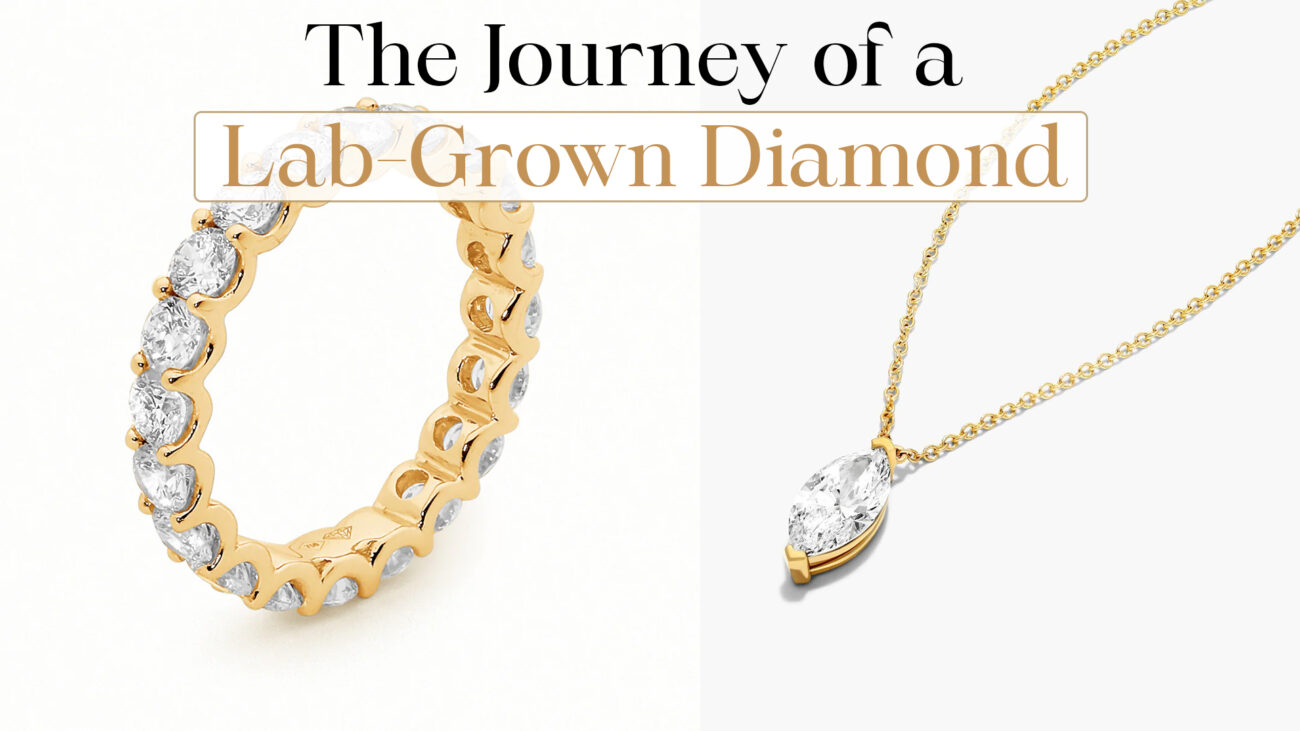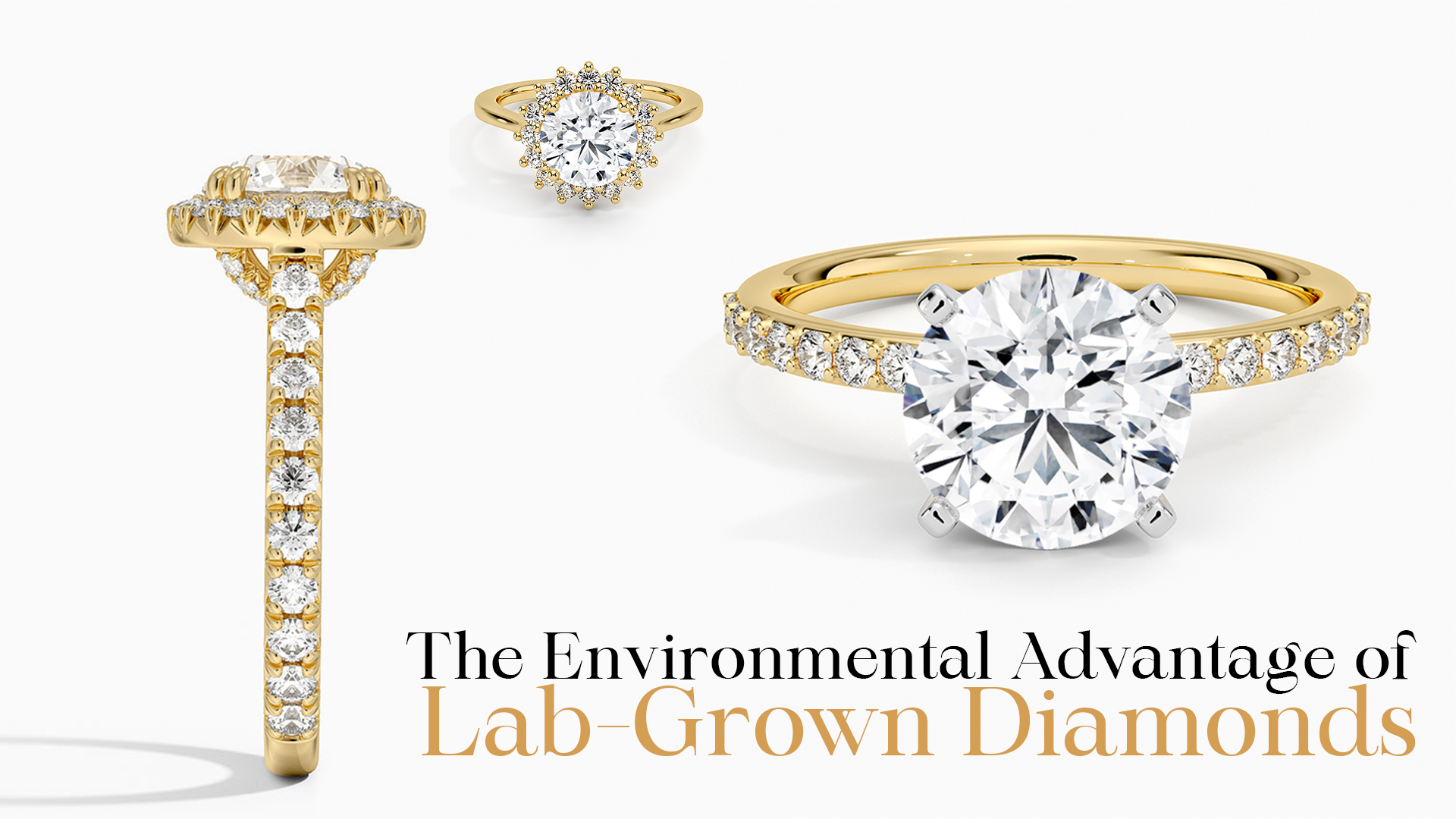In the world of luxury jewelry, the allure of diamonds has always been irresistible. These timeless gems symbolize love, elegance, and sophistication, making them coveted treasures for generations. However, traditional diamond mining comes with a significant environmental cost, leading to concerns about sustainability and ethical sourcing. In response to these challenges, Sienna Solitaires has emerged as a pioneer in the industry, championing lab-grown diamonds as a sustainable and responsible alternative. This blog delves into the fascinating world of Sienna Solitaires’ lab-grown diamonds, exploring their environmental impact and the future of sustainable luxury.
Understanding Lab-Grown Diamonds
Lab-grown diamonds are created in controlled laboratory environments using advanced technological processes. These diamonds have the same chemical composition, crystal structure, and physical properties as natural diamonds, but they are produced ethically and sustainably. Unlike mined diamonds, which require extensive mining operations, lab-grown diamonds are cultivated using minimal resources and with reduced environmental impact.
The Environmental Advantage of Lab-Grown Diamonds
One of the primary advantages of lab-grown diamonds is their significantly lower environmental footprint compared to mined diamonds. Traditional diamond mining involves land excavation, water usage, energy consumption, and habitat disruption, leading to environmental degradation and pollution. In contrast, lab-grown diamonds require minimal land use, consume less water and energy, and emit fewer greenhouse gases, making them a more environmentally friendly choice.
Sienna Solitaires’ commitment to sustainability is reflected in their embrace of lab-grown diamonds. By opting for these ethically produced gems, the brand contributes to environmental conservation and reduces the ecological impact of diamond mining. This proactive approach aligns with the growing demand for sustainable luxury options among consumers who value ethical and eco-friendly practices.
The Journey of a Lab-Grown Diamond

The process of creating lab-grown diamonds begins with a tiny diamond seed or a carbon source, such as graphite. These materials are placed in a high-pressure, high-temperature (HPHT) or chemical vapor deposition (CVD) chamber, where they are subjected to controlled conditions that mimic the natural diamond formation process. Over time, carbon atoms bond together, layer by layer, to create a diamond crystal that grows into a larger, gem-quality diamond.
This innovative manufacturing process not only produces diamonds that are visually identical to natural diamonds but also offers greater control over the diamond’s characteristics, such as color, clarity, and size. It eliminates the need for environmentally destructive mining practices and ensures a more sustainable supply chain for the jewelry industry.
Environmental Impact Comparison: Lab-Grown vs. Mined Diamonds
To understand the environmental impact of lab-grown diamonds versus mined diamonds, let’s explore key areas of concern:
- Land Use: Traditional diamond mining requires extensive land excavation, leading to habitat destruction and ecosystem disruption. In contrast, lab-grown diamonds use minimal land space, primarily within laboratory facilities, reducing their environmental footprint.
- Water Consumption: Diamond mining operations consume substantial amounts of water for mining processes and dust suppression. Lab-grown diamonds require far less water, contributing to water conservation efforts and reducing strain on local water sources.
- Energy Usage: Mining and processing natural diamonds are energy-intensive activities that rely on fossil fuels. Lab-grown diamonds, while still requiring energy for production, can be sourced from renewable energy sources, further reducing their carbon footprint.
- Carbon Emissions: The carbon emissions associated with traditional diamond mining, including transportation and machinery operation, contribute to climate change. Lab-grown diamonds emit significantly fewer greenhouse gases, making them a more environmentally friendly choice.
By opting for lab-grown diamonds, consumers can make a conscious choice to support sustainable practices and reduce their ecological impact. Sienna Solitaires’ dedication to offering ethically sourced and environmentally responsible jewelry reflects a broader shift towards sustainable luxury in the industry.
The Future of Sustainable Luxury
As awareness of environmental issues grows and consumer preferences evolve, the demand for sustainable luxury products continues to rise. Sienna Solitaires is at the forefront of this movement, offering a range of exquisite jewelry pieces crafted with lab-grown diamonds and sustainable materials.
The brand’s commitment to transparency, ethical sourcing, and environmental stewardship resonates with modern consumers who seek products that align with their values. Through education, innovation, and responsible business practices, Sienna Solitaires shines as a beacon of sustainable luxury in the jewelry landscape.
Shining Responsibly with Sienna Solitaires
Sienna Solitaires’ lab-grown diamonds exemplify the fusion of luxury, ethics, and sustainability. These responsibly sourced gems not only showcase exceptional beauty and quality but also contribute to a greener and more environmentally conscious jewelry industry. By choosing lab-grown diamonds, consumers can shine brighter while treading lightly on the planet, paving the way for a future where luxury and sustainability go hand in hand. Sienna Solitaires invites you to join this journey of responsible elegance and make a difference with every dazzling gem.
FAQs
1. What are lab-grown diamonds, and how are they created?
Lab-grown diamonds are created in controlled laboratory environments using advanced technological processes that mimic the natural diamond formation process.
2. How do lab-grown diamonds differ from mined diamonds?
Lab-grown diamonds have the same physical, chemical, and optical properties as mined diamonds but are produced ethically and sustainably in laboratories, without the environmental and ethical concerns associated with mining.
3. What is Sienna Solitaires’ approach to sustainability with lab-grown diamonds? Sienna Solitaires prioritizes sustainability by using lab-grown diamonds that have a significantly lower environmental impact compared to mined diamonds, contributing to environmental conservation and responsible sourcing practices.
4. Are lab-grown diamonds of the same quality as mined diamonds?
Yes, lab-grown diamonds are of comparable quality to mined diamonds. They undergo rigorous quality control measures to ensure they meet the highest standards of cut, clarity, color, and carat weight.
5. What are the environmental benefits of lab-grown diamonds?
Lab-grown diamonds have a lower environmental footprint as they require minimal land use, water consumption, and energy usage compared to traditional diamond mining, contributing to environmental sustainability.


